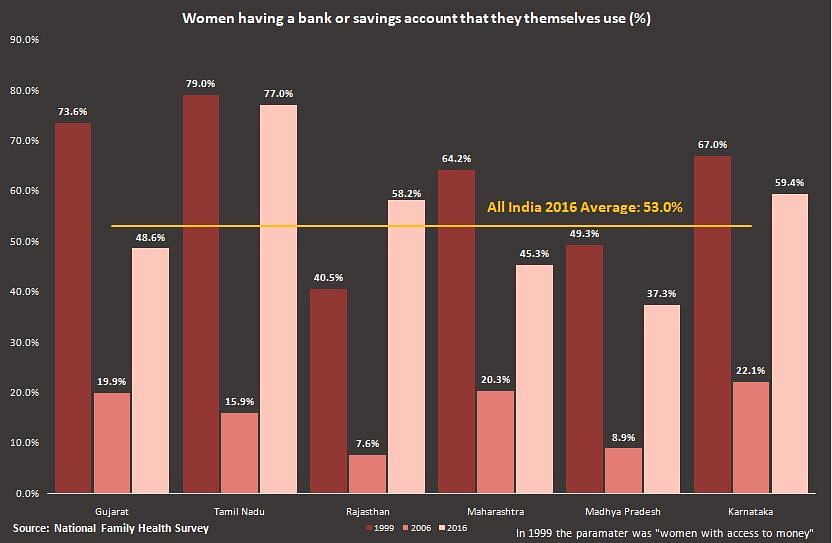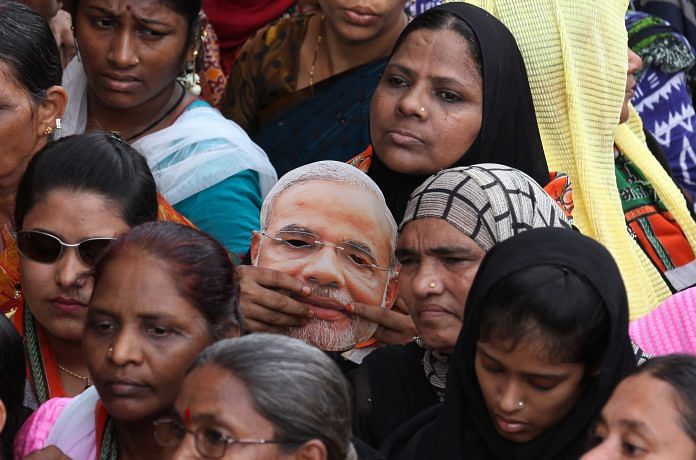According to data from National Family Health Surveys from 1999 to 2016, the performance of Gujarat on human development indicators for women is a mixed bag.
New Delhi: Women have always been an important vote bank for Prime Minister Narendra Modi and the BJP. In Gujarat, the party has made a concerted effort to keep them in its corner. Recently, it sent external affairs minister Sushma Swaraj to Gujarat, where she held a unique ‘Mahila Townhall’ to address the concerns of Gujarati women.
On social media, the party posted a video of information & broadcasting minister Smriti Irani detailing the various women’s empowerment schemes of the Modi government that have benefitted the women of Gujarat.
In response, the Congress too went on the offensive, forming a five-member team of women headed by Sushmita Dev, president of the All India Mahila Congress, to go on a door-to-door campaign, highlighting what the party says is the regressive mindset of the RSS on gender issues. It has also held regular meetings only for women voters.
Both parties have highlighted the work they’ve done to empower women, and discredited the work done by the competition. But what is the real state of women in Gujarat?
To answer the question, ThePrint has accessed data from the National Family Health Surveys from 1999-2016. Gujarat is being compared to states similar in human development indicators – Tamil Nadu, Madhya Pradesh, Karnataka, Maharashtra and Rajasthan.
Sex ratio
Among the six states being considered, Gujarat fares second from the bottom on this index.Despite some improvement since 2006, when the sex ratio had dipped to 934 women per 1,000 men, it is still well below the national average of 991.
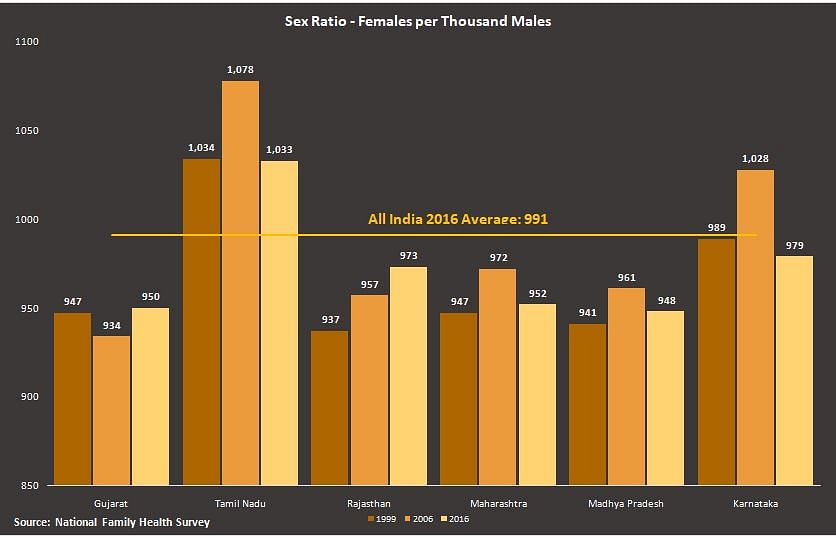
Education
Gujarat has seen a tremendous improvement in overall literacy levels, having surpassed the national average; it is among the top three states in terms of women’s literacy following Maharashtra and Tamil Nadu.
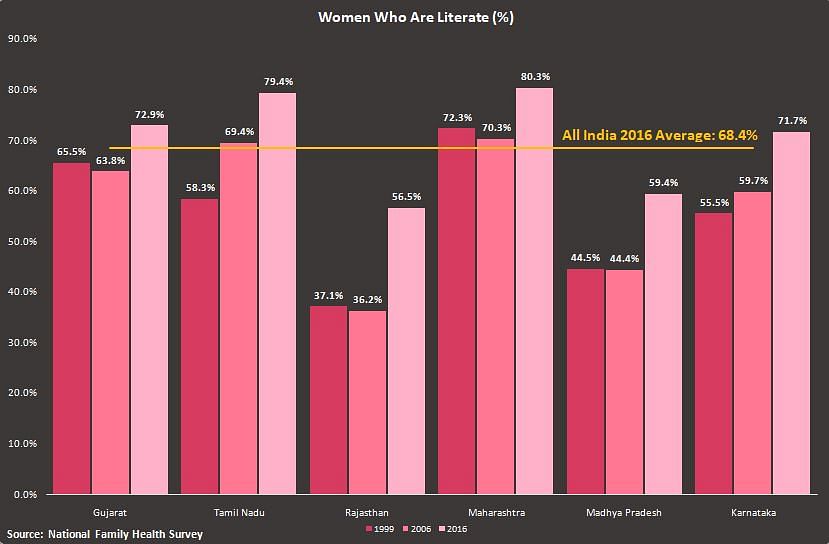
It has also witnessed an increase in the number of women who are completing high school.
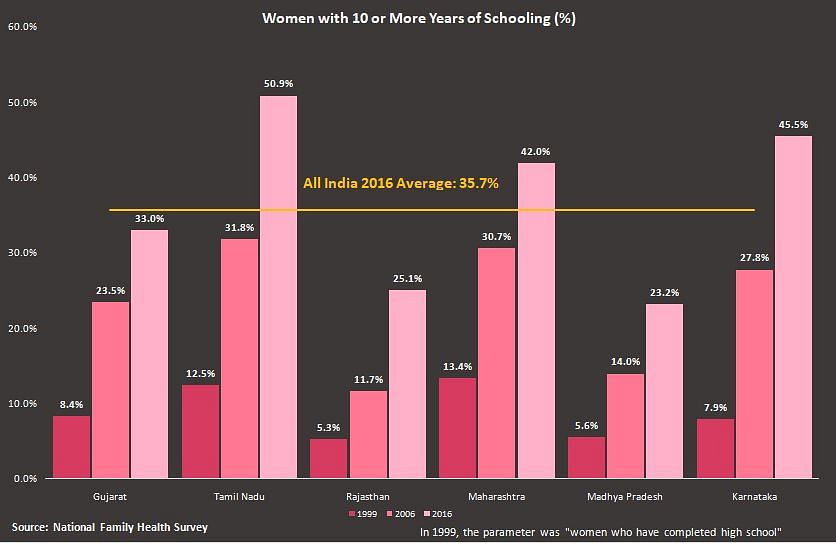
Marriage, pregnancy and family planning
Gujarat has seen a significant drop in the percentage of women who are either married or pregnant between the ages of 15-19. It is among the three best states on both indices, and well below the national average.
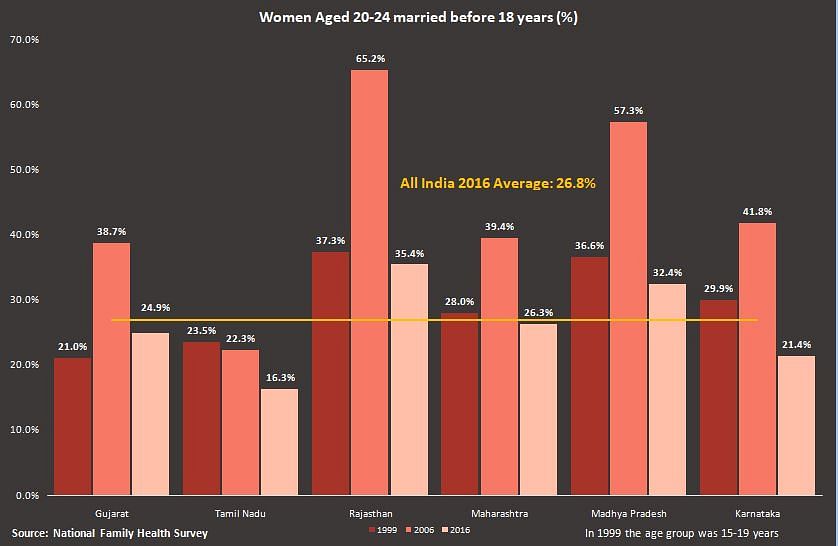
The National Family Health Survey considers family planning to be a woman’s ability to either postpone or completely stop bearing children. This decision is closely tied to a woman’s autonomy over her body.
As per the figures, Gujarat is performing the most poorly on this index, and has surpassed the national average, with 17 per cent women in the state with an unmet need for family planning. This figure has also significantly increased since 1999, when it was at just 8.5 per cent.
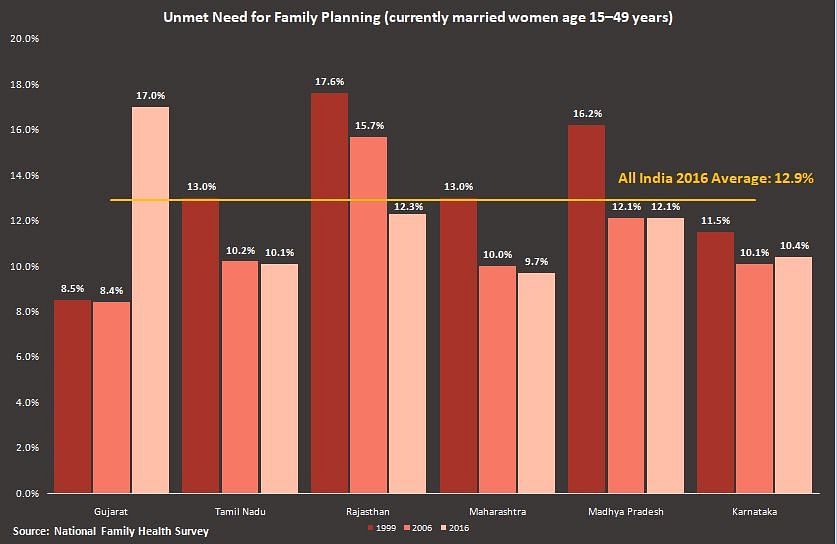
Decisional autonomy
While Gujarat is doing marginally better than the national average and better than most states in terms of the percentage of women who participate in household decisions, it has witnessed a drop of around 10 percentage points since 1999 from 94.5 per cent to 85.4 per cent.
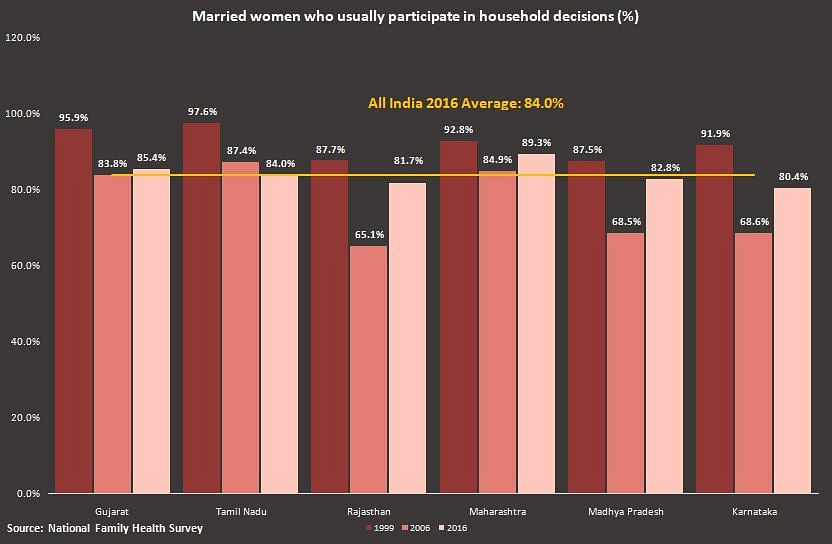
However, the state is also among the worst on the second index of women who have a bank account or savings to themselves, with only 48 per cent.
